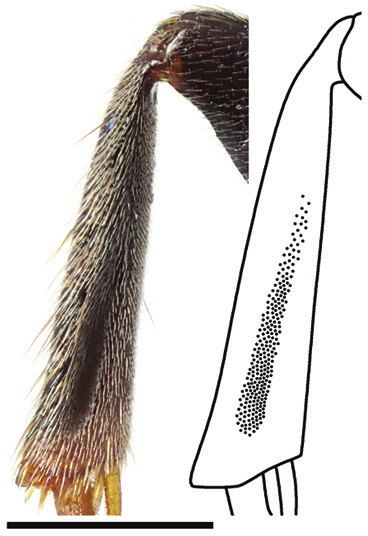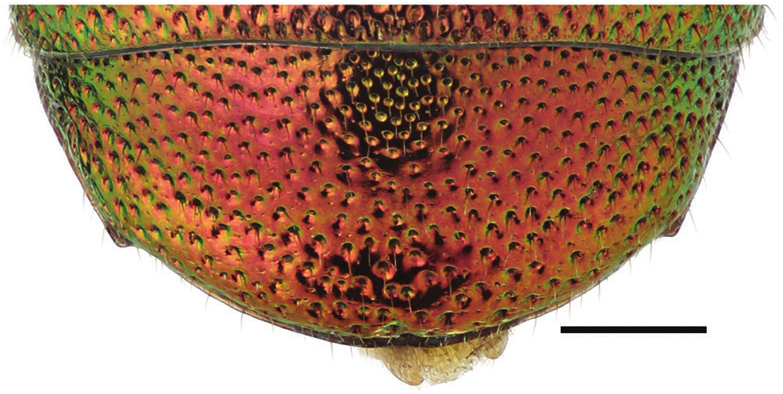Hedychrum gerstaeckeri
- Innhold
- Diagnosis
- Distribution
- Biology
Diagnosis
Figure 56
Left mesotibia: H. gerstaeckeri ♂. Scale 0.5 mm.
Figure 61
T3, dorsal view: H. gerstaeckeri ♂. Scale 0.5 mm.
Length 4–8 mm.
The female differs from the females of other Hedychrum species by having a completely blue, violet-blue or green-blue mesosoma. As in H. rutilans, the female does not have an apicomedial tubercle on S3. Both sexes also have medially pale brown or yellowish mandibles. The male is similar to the female in colouration and can be confused with the males of H. niemelai and H. nobile. However, the punctation of T3 is coarser in H. gerstaeckeri (Fig. 61) and the mesotibial groove is longer and deeper (Fig. 56).
Distribution
Denmark, Estonia, Finland, Latvia, Lithuania. Relatively common.
Trans-Palearctic: from western Europe to Japan, China and Taiwan (Rosa et al. 2014).
Be aware that the records present in the GBIF map may be misleading for some countries due to unrevised data sets or missing information.
GBIF Taxon: Hedychrum gerstaeckeri Chevrier, 1869Biology
Habitat: sparsely vegetated sandy areas, dry meadows. Adults often visit flowers of Apiaceae, Asteraceae and Euphorbiaceae (Trautmann 1927, Kusdas 1956, Kunz 1994, Linsenmaier 1997, Westrich 1979, Rosa 2004, our own obs.).
Flight period: mid-June to late August.
Host: Cerceris rybyensis (Linnaeus) and C. ruficornis (Fabricius) (Crabronidae) (Berland and Bernard 1938, Grandi 1961, Petit 1975, Westrich 1979, Brechtel 1985, Gayubo et al. 1987, Saure 1998).

